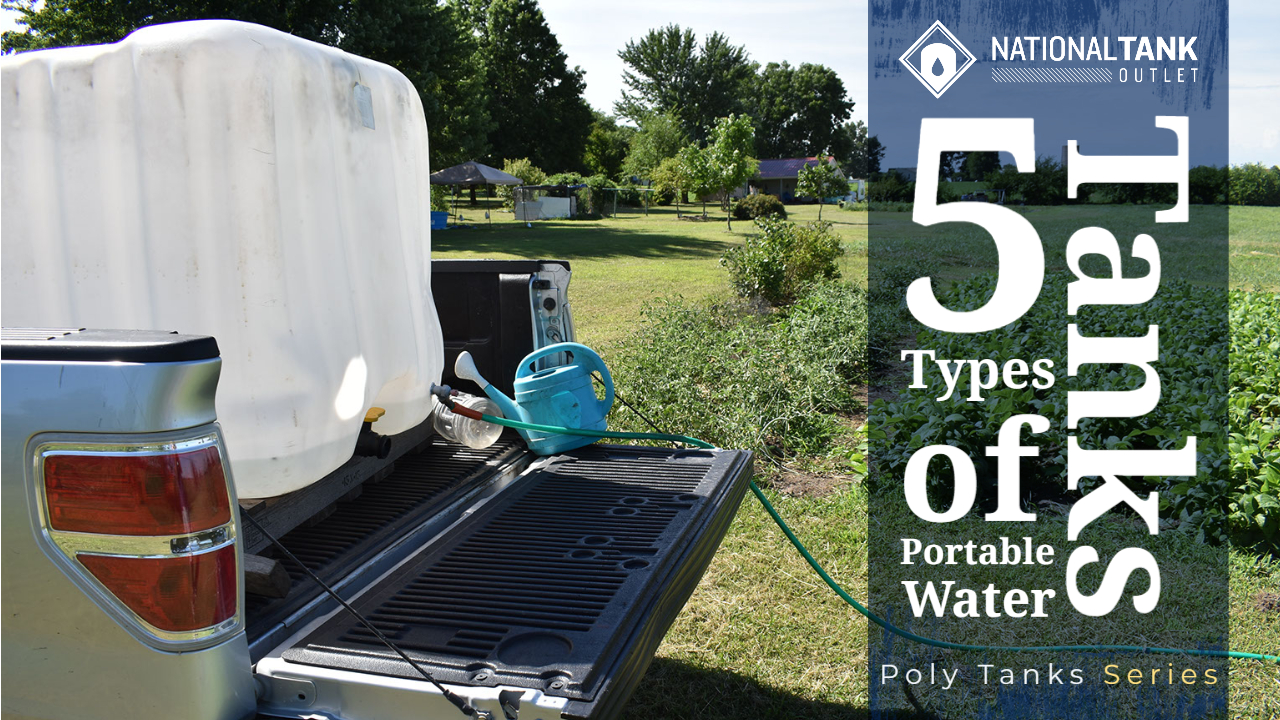
In this review on portable water tanks, we will look at five of the industry’s most frequently used and approved storage tank types. But first, what is a portable water tank? Seems like a straightforward question. However, to be classified for sale and use as a portable water tank that is okay for transportation, these containers must meet and/or exceed various North American regulations that oversee both their manufacturing and engineering design.
Portable Water Tank Design
Portable water tanks, especially those intended to hold potable, drinkable water, must be evaluated and approved prior to their use.
The National Sanitation Foundation (NSF), American National Standards Institute (ANSI), and the Food & Drug Administration (FDA) through the Code of Federal Regulations (CFR) all have guidelines that focus on the specifications required for a certified and approved water transport container.
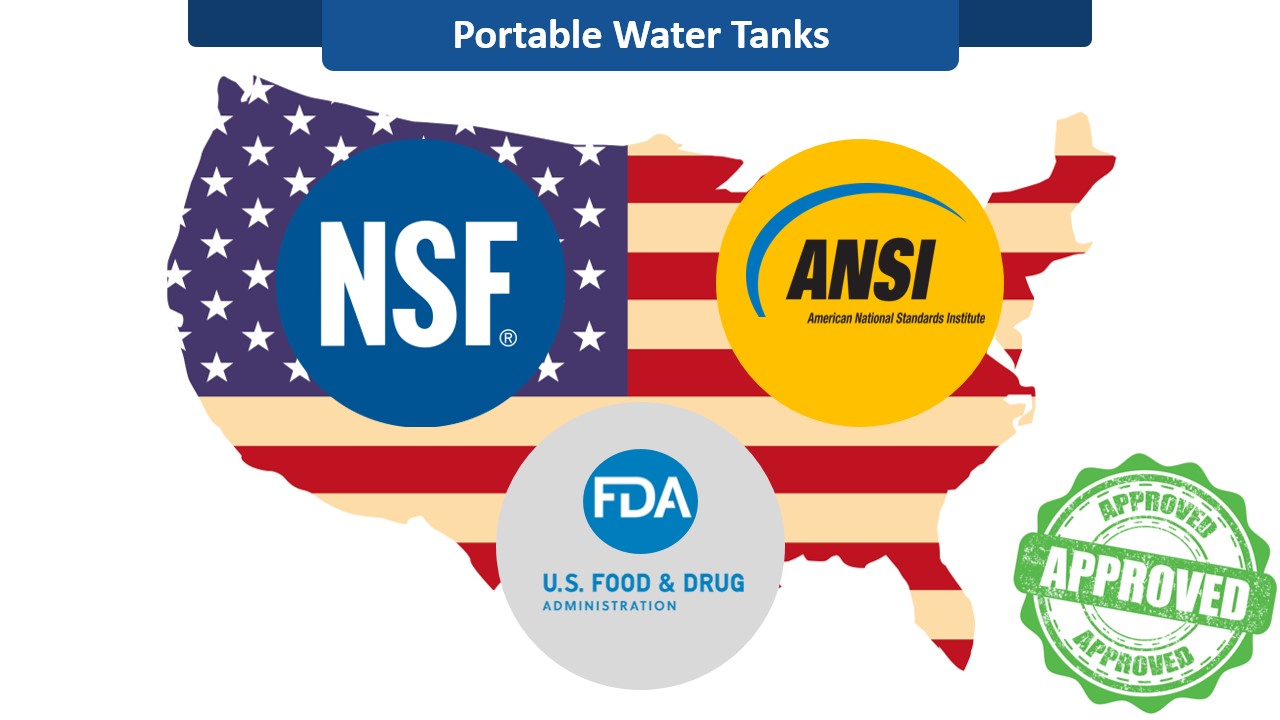
The various guidelines cover a portable water tank’s material of manufacture, any additives, colors, additional components as well as their engineering.
Most portable water tanks are seamlessly molded from UV stabilized, food grade high density polyethylene (HDPE) resin, are white in color and translucent to allow viewing of water levels. Portable water tanks must be designed to withstand the stresses caused by water weight, pressure, various transport scenarios and handling equipment. They must also be relatively or wholly inert to interactions between water and the container material. Lastly, as a portable storage tank they should be engineered to promote ease of handling and mobility.
The 5 Most Common Portable Water Tank Styles
The five most common portable water tank styles are intermediate bulk containers, leg tanks, utility tanks, pickup truck tanks, and ATV / UTV tanks. In this Poly Tank Series post, we will consider each of these tank options individually in terms of their unique design, capabilities, sizes, and purchase costs.
Intermediate Bulk Containers
An Intermediate Bulk Container, also known as an IBC, Caged Pallet Tote and Forklift Tank, is one of the top selected options in today’s market for portable water storage, use, and versatility. This is especially true for the caged IBC tote style intermediate bulk container. The engineering of an IBC produces a high performance, easy to use container that is well suited for many water use scenarios and water transport applications. An IBC tote is often used to transport, collect or store pure potable water, process water, batch water, rainwater, or irrigation fluids in industries that range from chemical synthesis to healthcare, to construction and roadwork, to water hauling, agriculture, landscaping, rainwater harvesting, cleaning, mobile detailing, and power washing.
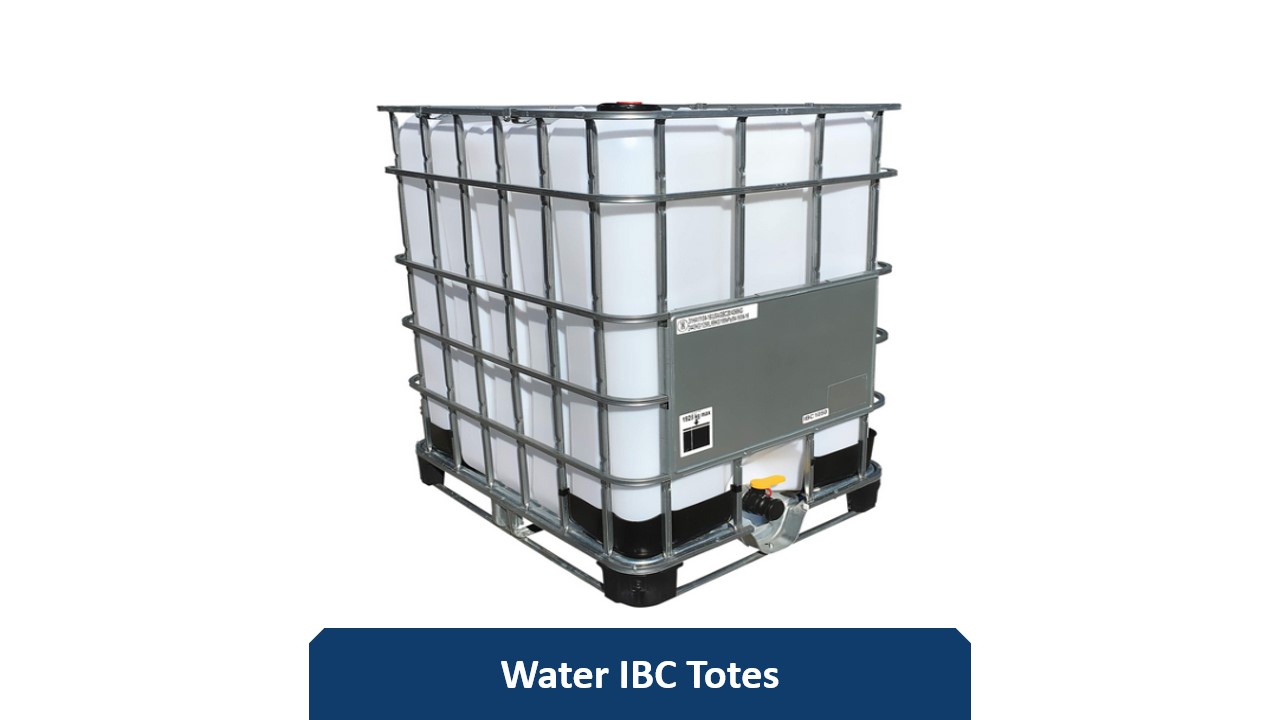
Intermediate bulk containers are known for increased maneuverability due to having integrated pallet stands with multi-directional access that provides easy handling, modularity and stacking ability. An IBC is durable against workplace drops, impacts, rust and corrosion exposure concerns. Portable water IBCs are simple to interface, fill and discharge, and provide a space-saving, ready-to-integrate design that collectively makes them one of many industries’ and business’s first choice in modern bulk water handling and transport.
IBC containers come in many styles and offer excellent handling for intermediate volumes of water. IBC volume sizes range from 110 gallons up to 550 gallons. The most commonly used IBC sizes are the 275 gallon and the 330 gallon IBC tanks. The most commonly used IBC type is the caged IBC tote, as pictured. Costs vary by IBC type and size. Prices for IBC totes can range from $200+ to $1,500+ for the totes often used for water.
Compared to other portable containers, water IBCs offer the greatest cost savings ratio in terms of total volume provided to total tank cost.
Leg Tanks
Featured as Elliptical, Horizontal, or Baffle Tanks, the Leg Tank is quoted as the most frequently used portable container for water transport and handling. The popularity of the leg water tank is due to their unique design as well as their wide volume capacity range. Leg tanks provide the largest volume handling ability among the different portable water container types with volumes that span from small 35 gallon tanks to bulk 6025 gallon tanks with prices between $135+ to $20,000+. No other portable container provides such a large capacity range or offers the various design shapes and features to accommodate different work scenarios.
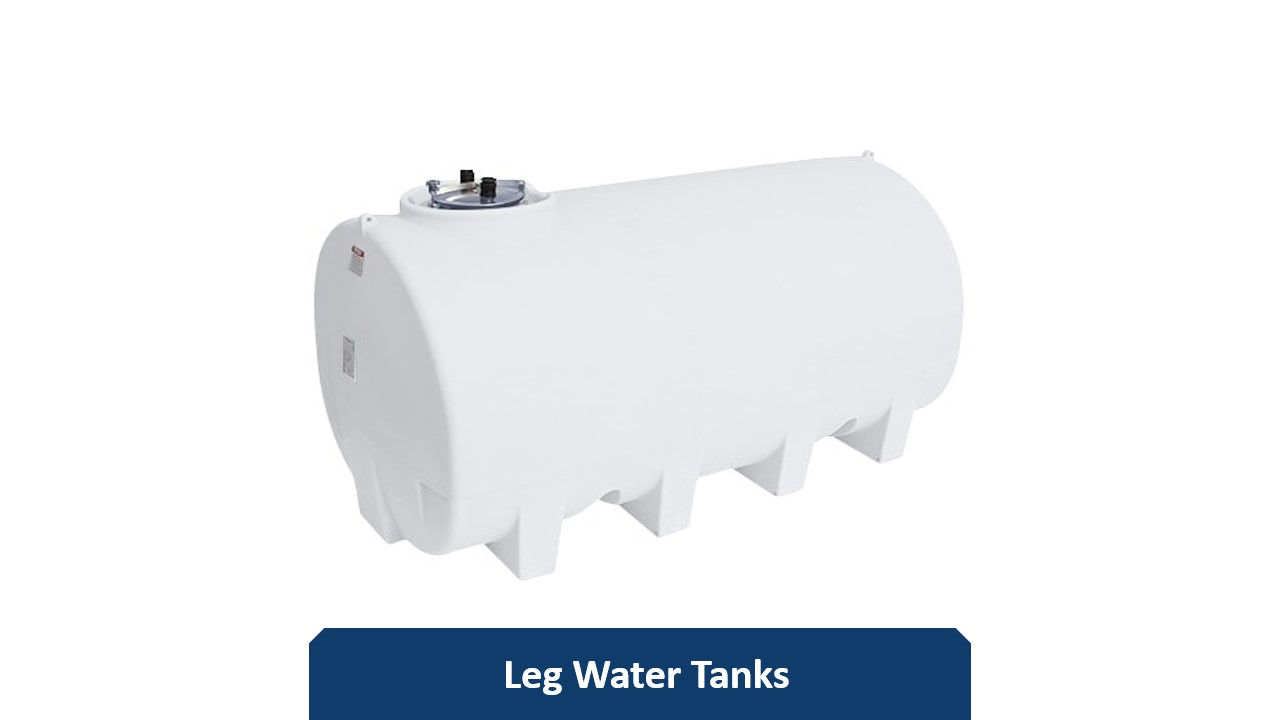
By engineering, leg tanks feature built-in legs, stands and/or restraint bands that ensure safe, secure, and effective transport. The tanks are often installed on and transported by a trailer or in a truck bed. Leg tanks feature internal cavities that act as baffles to reduce liquid sloshing, which is an important safety concern for the stability of large volumes during transport.
The different leg tank designs each have advantages that make them more suited for select water handling applications. In example, cradle tanks allow movement via front loaders, and elliptical tanks provide a reduced center of gravity when high agitation, rough-working conditions are a concern. For water handling, leg tanks are often used in construction scenarios as well as in agricultural for irrigation, livestock watering, and as nurse tanks. This portable water tank type is a first-rate selection due to their engineering, volume capacity, and overall work capability.
Utility Tanks
Known as Utility Tanks due to their versatility, these portable water containers are a popular choice as they have various design options, sizes, and are well-suited for a wide range of water-based applications. The utility tank meets all the criteria to be classified as a portable water tank. They have an intuitive, simple design that is easy to handle and often features built-in grooves for tie-down restraints during vehicle transport. Most utility tanks are engineered to be lightweight and suited for small scale water handling, but high capacity utility tanks are also available for large applications. Utility tanks have a wide selection of volume capacities ranging from small 7 gallon tanks up to heavy duty 4200 gallon tanks. Prices can range from $80+ to $9,000+.
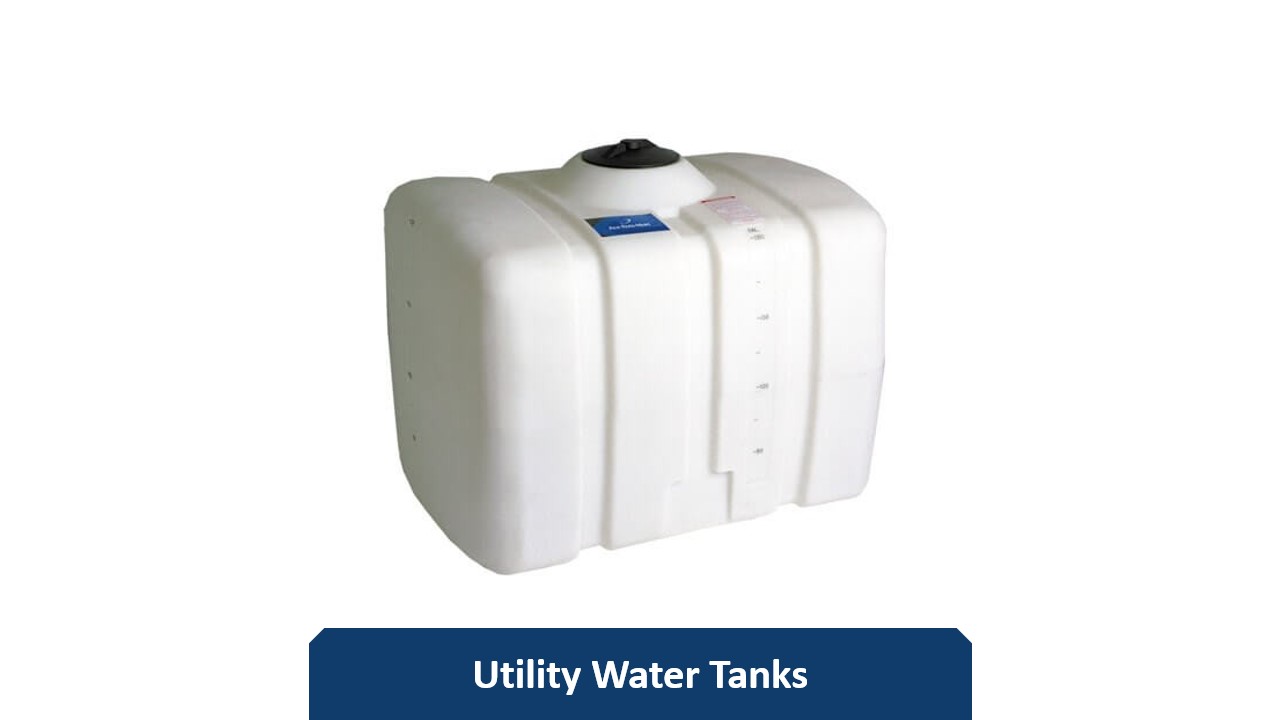
Available utility tank types include loaf tanks, day tanks, pest control operator tanks (PCO), low profile tanks, and skid mounted utility tanks which provide improved mobility. The different utility tank styles are made to match work use cases and are most frequently used for irrigation, fertigation, washing and/or other cleaning applications in landscaping, groundskeeping, agriculture, vehicle and property maintenance. Storing and providing fresh, drinkable water in food and beverage applications is another common use for utility tanks, especially in mobile and temporary setups such as food trucks and concession stands.
Pickup Truck Bed Tanks
An original portable water tank by design, Pickup Truck Bed Tanks are made for a close-to-form fit in the cargo bed of many personal pickup trucks. This portable water tank type differs from others in its shape and manufacturing style. Pickup truck tanks have built in tie-down points, an increased structural durability, and an overall shape, size and features that are tailored specifically for use from the bed of a truck.
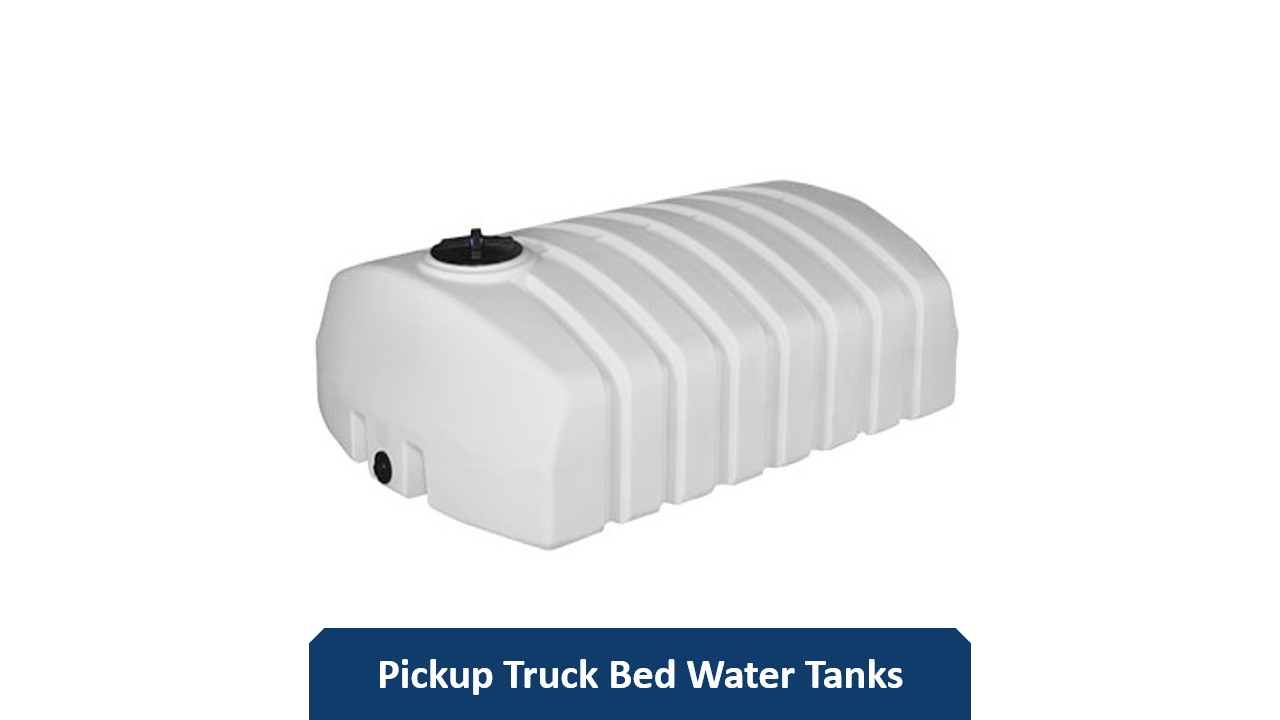
Pickup truck tank storage volumes are more limited than the other portable water tanks due to necessary size and weight limits for pickup trucks. Their tank volumes are still significant and well-suited for many applications. Pickup truck bed water tanks extend in size from 200 gallons up to 450 gallons. Prices can range from $350+ to $1,000+.
Pickup truck tanks are designed to be filled and used directly from a truck bed. The tanks have intelligently placed water inlets and outlets that make for easy onboard water loading. Some even feature flat points that improve a person’s access. This highly portable water tank type removes the need for a trailer or other means of transport and is well-suited for use in landscaping, pressure washing applications, on farms and for other large land areas that require off-road mobility.
ATV / UTV Tanks
The last on our list, ATV / UTV tanks are portable water tanks that have been selected or engineered to fit or attach to all-terrain vehicles (ATVs) and utility task vehicles (UTVs). When work and terrain constraints limit access to an ATV / UTV vehicle, these transport tanks allow water to be delivered even in the hardest to reach off-road places. ATV and UTV tanks are frequently used on personal or commercial farms, for cattle and other livestock rearing, vineyards, and for landscape maintenance such as groundskeeping, national forest registries, parks, golf courses and pest control maintenance.
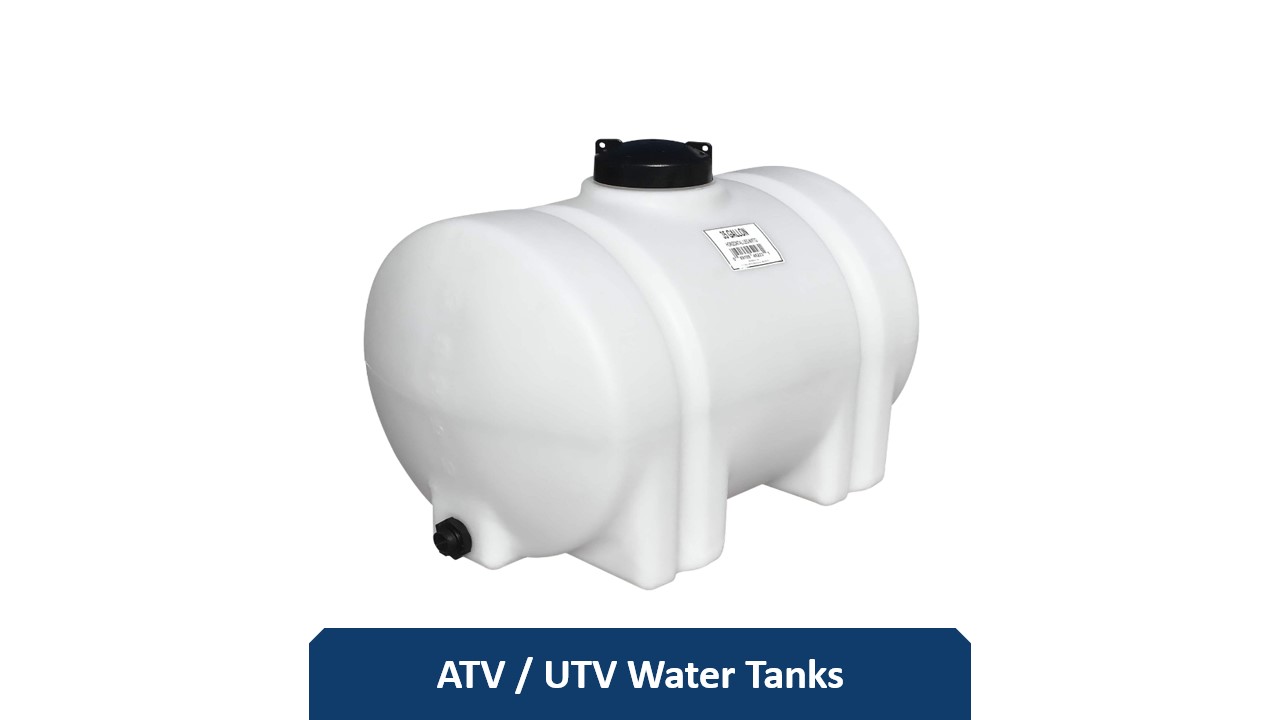
ATV and UTV tanks are made in volume capacities that range from 35 gallons to as large as 600 gallons for high volume scenarios and robust utility vehicles. Prices range from $150+ to $1,300+. ATV / UTV tanks meet all the required design criteria for transporting potable water and feature tie straps, restraints or other attachment means for secure use for off road applications.
Takeaway | 5 Types of Portable Water Tanks
Not all portable tanks, let alone portable freshwater tanks, are created equal. Some manufacturers can use third-party materials that don’t adhere to U.S. health and design qualifications or can make false claims concerning their product specifications. Trust, clarity and transparency go hand-in-hand in today’s loaded product markets, making it all the more important to find quality suppliers with the integrity, authority and resources you can rely on.
Contact our support experts to discover the National Tank Outlet difference and why we are America’s Liquid Tank Superstore, leading the way in portable water tanks and more. Check out our full selection of portable water tanks here.
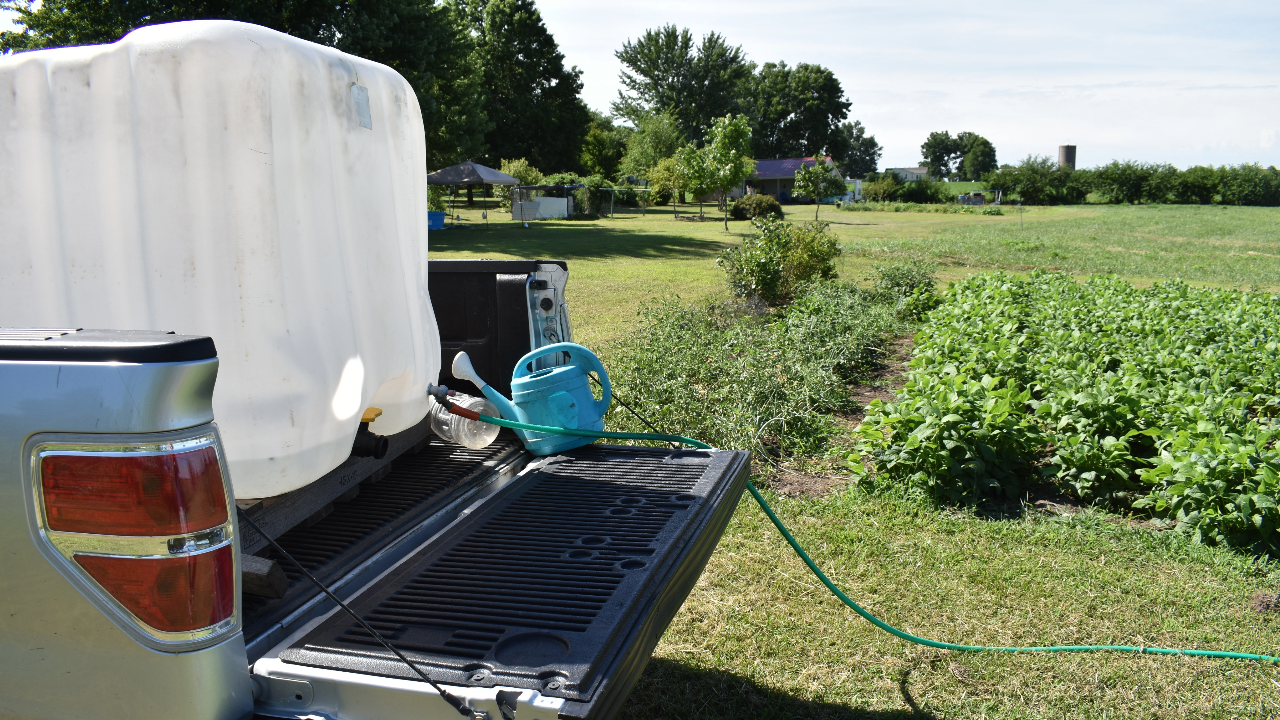
Portable Water Tanks
